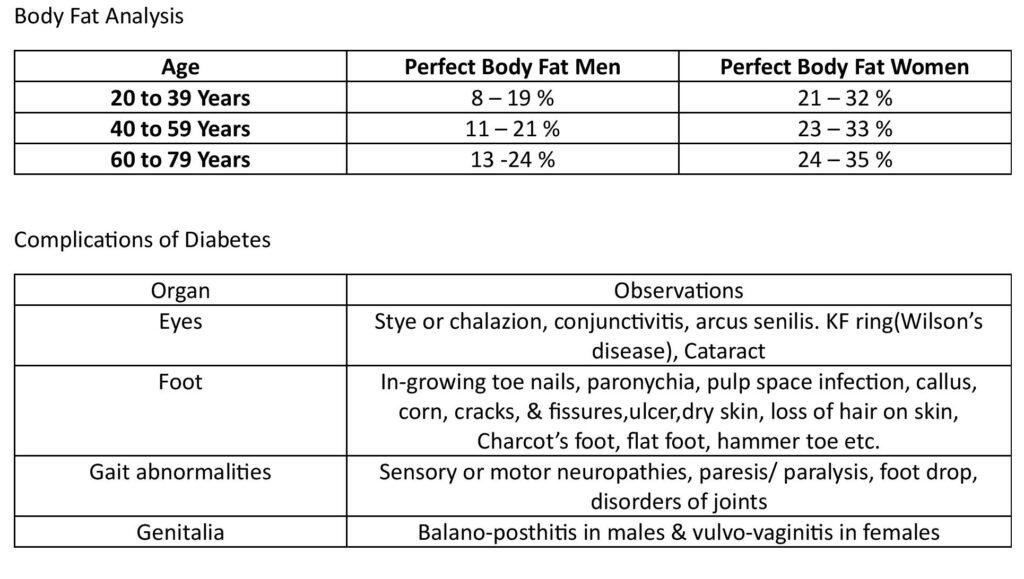Anthropometry in diabetes plays a vital role in evaluating the risk of developing diabetes, monitoring disease progression, and assessing the risk of complications. It involves the measurement of physical body parameters, which can provide valuable insights into metabolic health and guide personalized management strategies.
Key Anthropometric Measurements
1. Body Mass Index (BMI)
Relevance:
Elevated BMI is a strong predictor of type 2 diabetes.
Higher BMI is associated with insulin resistance and metabolic syndrome.
Categories:
Normal: 18.5–24.9 kg/m²
Overweight: 25–29.9 kg/m²
Obese: ≥30 kg/m²
Limitations:
Does not differentiate between fat and lean mass.
May underestimate risk in individuals with central obesity.

2. Waist Circumference (WC)
Relevance:
Central obesity is more predictive of type 2 diabetes than overall obesity.
Abdominal fat is associated with increased insulin resistance.
Cut-offs:
Men: >102 cm (40 in)
Women: >88 cm (35 in)
3. Waist-to-Hip Ratio (WHR)
Relevance:
High WHR indicates visceral adiposity, a risk factor for diabetes.
Cut-offs:
Men: ≥0.90
Women: ≥0.85
4. Waist-to-Height Ratio (WHtR)
Relevance:
A strong predictor of cardiovascular and metabolic risks.
Recommended cut-off: ≥0.5.

5. Skinfold Thickness
Relevance:
Measures subcutaneous fat at various sites (e.g., triceps, subscapular).
Less commonly used due to the availability of advanced imaging techniques.
6. Body Fat Percentage
Relevance:
Higher fat percentage is linked to insulin resistance.
Measured using bioelectrical impedance or dual-energy X-ray absorptiometry (DEXA).

Applications of Anthropometry in Diabetes
1. Risk Assessment
High BMI, WC, and WHR are predictors of type 2 diabetes.
Central obesity increases the risk of insulin resistance and metabolic complications.
2. Monitoring Glycemic Control
Changes in body fat distribution can reflect the efficacy of lifestyle interventions or pharmacotherapy.
3. Predicting Complications
Anthropometric measures like WC and WHR are linked to cardiovascular disease, a common complication of diabetes.
4. Guiding Interventions
Targets for weight loss and fat redistribution are based on anthropometric findings.
Lifestyle changes (e.g., diet and exercise) can improve these parameters.
Anthropometric Tools in Diabetes Management
1. Measuring Tape
For WC, WHR, and WHtR.
2. Calipers
For skinfold thickness.
3. Weighing Scale and Stadiometer
For BMI calculation.
4. Advanced Tools
DEXA, MRI, or CT for detailed fat distribution analysis.
Anthropometric Considerations for Special Populations
1. Ethnic Variations
Asians have higher diabetes risk at lower BMI and WC thresholds.
Recommended BMI cut-off for Asians: ≥23 kg/m² for overweight.
2. Children and Adolescents
Growth charts and percentiles are used for BMI and WC evaluation.
3. Elderly
Sarcopenic obesity (low muscle mass with high fat) may require specialized tools like DEXA.
By systematically integrating anthropometric measurements, healthcare providers can improve diabetes prevention and management strategies.
